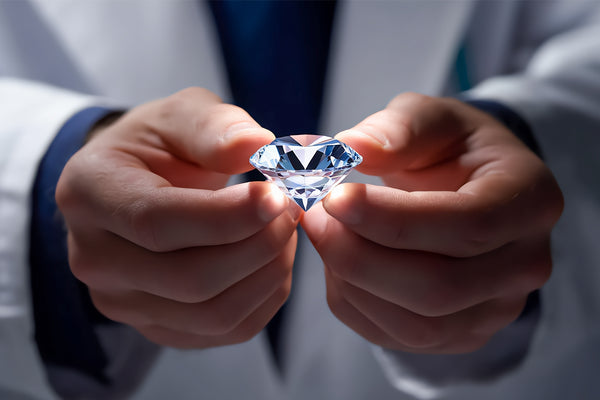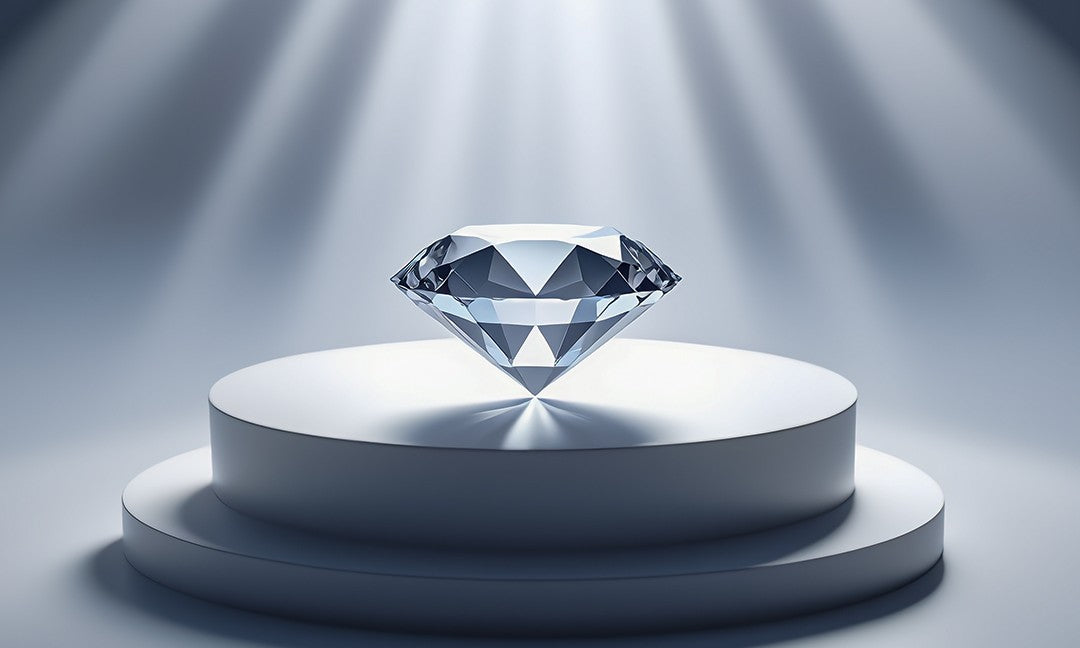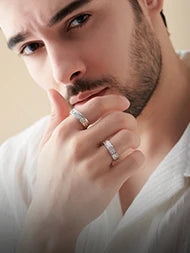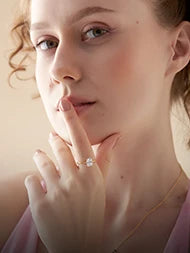Diamonds take a lot of energy to be created, even the ones made in Labs. They all begin from a small fragment. A thin slice of diamond. That tiny piece is what makes the entire process possible.
It’s called a diamond seed, and while it might not look like much at first glance, it holds the blueprint for everything that follows.
Understanding what a diamond seed is and how it contributes to the process of making a diamond helps you understand the origins of your diamond. That stunning rock you wear began as something small, but truly significant.
What Is a Diamond Seed?

A diamond seed is just that, a seed. It’s not metaphorical or symbolic. It’s a literal, small fragment of diamond, often a thin plate or sliver. You can hold it between your fingers, and you probably wouldn’t even notice anything special about it.
Usually, it’s flat. Sometimes square. But it’s made from a real diamond, either Mined or Grown. That seed is where carbon atoms begin to gather, forming layers that will eventually create a full diamond crystal.
It's kind of wild when you think about it: from one tiny bit, a whole diamond takes shape.
Where Do These Seeds Come From?
While it’s possible to use a sliver of a Mined Diamond, most Labs today prefer seeds made from previously Grown Diamonds. There’s a simple reason: cleaner control and better consistency. One Lab Grown diamond helps grow the next, and so on.
Labs cut these seeds from finished stones using lasers or high-precision tools. But it’s not a random slicing job. The orientation, thickness, and internal clarity of each seed matter more than you’d expect. Even a small flaw can affect how the diamond grows.
So yes, seeds are chosen carefully. They're measured, inspected, and aligned with serious intent.
Two Main Ways Diamonds Grow
After selecting the seed, the Lab chooses a growth method. There are two main techniques:

HPHT (High Pressure, High Temperature)
Imagine simulating conditions deep beneath the Earth, intense heat and pressure. Carbon gets melted into a molten state and surrounds the seed. Bit by bit, the carbon crystallizes, forming a new diamond.
CVD (Chemical Vapor Deposition)
In this method, the seed is placed in a chamber filled with carbon-rich gas, usually methane. Once energy (like microwaves) hits the gas, it breaks down, and carbon atoms begin to settle on the seed. Layer by layer, a diamond slowly takes shape.
Both methods create real diamonds. Chemically and physically identical to what’s pulled from the ground. This is the method predominantly used in India due to its efficiency and scalability.
Is the Seed Still There at the End?

Once the diamond finishes growing, that seed is still part of the stone. You can’t remove it. You won’t see it, either. By then, it’s fused into the rest of the structure. No seams, no visible core, but it’s there, holding everything together from the center. It's sort of poetic, the part no one notices is the one holding everything up. It’s the quiet origin behind every shimmer. Invisible, yet indispensable. Proof that beginnings, no matter how small, shape everything that follows. Buried deep, it endures pressure, heat, and time without a trace. Yet without it, nothing would exist. It’s the hidden heart of something extraordinary. Not loud, not showy, just quietly essential.
Does the Quality of the Seed Matter?
Absolutely. You could say the seed is the backbone of the entire process.
If the seed has microscopic cracks or internal distortions, those can echo out through the rest of the diamond. It might grow unevenly or it might not grow at all. Even the way it’s angled inside the chamber can affect the final shape.
That’s why reputable Labs spend a lot of time preparing and analyzing their seeds. This isn’t just step one, it’s the foundation for everything else.
Why Should Anyone Care?

Most people don’t think about this when buying a diamond. They look at the cut, the sparkle, the setting.
But if you're choosing a Lab Grown Diamond, part of what you're really choosing is the story. You're saying yes to a process that’s cleaner, more intentional. And that process begins with one, barely visible piece chosen carefully, shaped precisely, and placed with purpose.
It’s easy to overlook, but the diamond seed is a reminder that beauty doesn’t just happen. It’s built, grown and layered. And that matters.
Conclusion
At Lucira, we think a lot about beginnings. Every diamond we offer didn’t just come out perfect; it started from something small. A single seed, picked for its clarity, its strength, and the way it’s shaped.
There’s no shortcut here. The people who grow these diamonds know what they’re doing. They rely on experience as much as technology, choosing the right seed isn’t guesswork; it’s a quiet kind of precision that takes time to get right.
That’s where it starts and that’s why we care because what you end up with isn’t just a beautiful diamond. It’s something built with care, from the inside out. You might never see that seed. Most don’t. But knowing it’s in there at the heart of it all makes a difference. It’s not just a detail. It’s the reason the whole thing exists.


